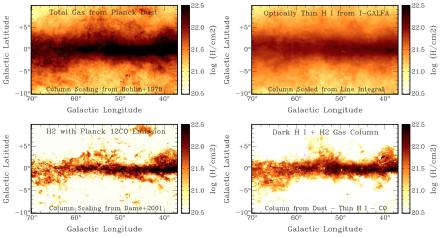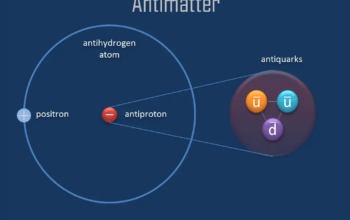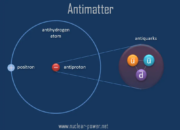Climate has long been characterized as an intricate tapestry woven from myriad threads of atmospheric dynamics, oceanic currents, and terrestrial interactions. However, a fascinating hypothesis emerging in contemporary scientific discourse proposes an additional thread—cosmic rays, those enigmatic particles emanating from interstellar space. The hypothesis that cosmic rays may influence Earth’s climate invites us to reconsider the climactic fabric of our planet, intertwining the celestial with the terrestrial in an astonishingly complex interplay.
At the core of this investigation lies an understanding of cosmic rays. These high-energy particles, primarily protons, originating from supernovae and other astrophysical phenomena traversing the cosmos, trigger a cascade of interactions upon entering the Earth’s atmosphere. Once these particles collide with atmospheric nuclei, they can induce the formation of secondary particles, such as muons and electrons, alongside atmospheric ions. This cosmic influx alters the delicate balance of atmospheric conditions, and therein lies our inquiry: do these phenomena bear any influence on climate?
This question burgeons into significance when one considers the potential implications of cosmic rays on cloud formation. Clouds, those ethereal guardians of Earth’s surface, regulate temperature and precipitation patterns significantly. Research indicates that cosmic rays may play a pivotal role in the nucleation of cloud condensation nuclei (CCN). CCN are vital for cloud droplet formation, and thus, cosmic rays can be postulated as a catalyst for the condensation processes, potentially impacting weather patterns and climate over considerable timescales. This interplay between cosmic rays and CCN initiates a cascade of reactions that can tip the delicate balance of climate systems.
To elucidate further, consider the concept of solar activity. The duality of cosmic rays and solar radiation oscillates through climate dynamics. The sun’s activity fluctuates due to processes such as the solar cycle, which spans approximately 11 years. During periods of heightened solar activity, the solar wind intensifies, creating a protective bubble around the solar system that significantly diminishes cosmic ray penetration. Paradoxically, during solar minimum phases, an uptick in cosmic ray incidence can be observed, coinciding with periods of cooler climatic conditions. This cosmic dance reveals another layer of complexity within the climate system—a swirling interplay between solar radiation and cosmic influence that cannot be readily dismissed.
However, venturing further into this investigation unveils the challenge of causation. While correlations between cosmic ray fluctuations and climate patterns exist, establishing a direct causative link is complex. Scientific paradigms must account for variables such as greenhouse gas concentrations, anthropogenic activities, oceanic oscillations, and volcanic eruptions. The multifaceted web of interactions complicates our endeavor to untangle the precise role of cosmic rays. It evokes the idea of a cosmic orchestra, with each element playing its part in a resonant symphony of climatic phenomena. Determining the influence of cosmic rays is akin to discerning a single instrument’s melody amidst a grand orchestral composition.
Intriguingly, the potential impacts of cosmic rays extend beyond mere temperature variations to include an association with biological systems as well. The notion that cosmic rays influence not only cloud formation but also the atmospheric chemistry leading to climate changes offers a tantalizing avenue of exploration. For instance, cosmic rays can instigate the formation of aerosols, which further interact with cloud processes and climate dynamics. Such interconnections hint at a broader ecological canvas, where cosmic influences may subtly orchestrate not just meteorological conditions but the very life forms inhabiting the planet.
Moreover, as we delve deeper into the cosmic narrative, the historic perspective enriches our understanding. Paleoclimatic data gleaned from ice cores, sediment records, and dendrochronology provide insights into past climatic conditions. Proxies suggest that variations in cosmic ray intensity are correlated with climate fluctuations over millennial timescales, ushering in an era of inquiry around these celestial influencers. The spectral analysis of these proxies unveils patterns reminiscent of cosmic cycles, where nature’s rhythm aligns with cosmic fluctuations.
Interface these cosmic considerations with our burgeoning climate crisis, and the stakes become immeasurably high. The anthropogenic alteration of greenhouse gas concentrations has ushered in an era of unprecedented warming, yet the role played by cosmic rays amidst these changes must not be neglected. Understanding their influence could yield insights into natural climate feedback mechanisms that may either ameliorate or exacerbate ongoing climatic trends. As humankind grapples with the repercussions of climate change, identifying the potential of cosmic rays may offer unique opportunities for climate mitigation, harnessing their interactions within climate models.
Conclusion casts a reflective light upon this cosmic inquiry. The prospect that cosmic rays may participate in the intricate choreography of Earth’s climate system is both alluring and daunting. As researchers embark on this celestial crusade, further methodological innovations are requisite to elucidate the nature of these interactions. Perhaps, as we continue to probe deeper into the mysteries of cosmic influence, we shall decode nature’s language—a language pronounced in the acrid whispers of cosmic particles, resonating through the vast corridors of time and space, shaping the very climate of our world.








